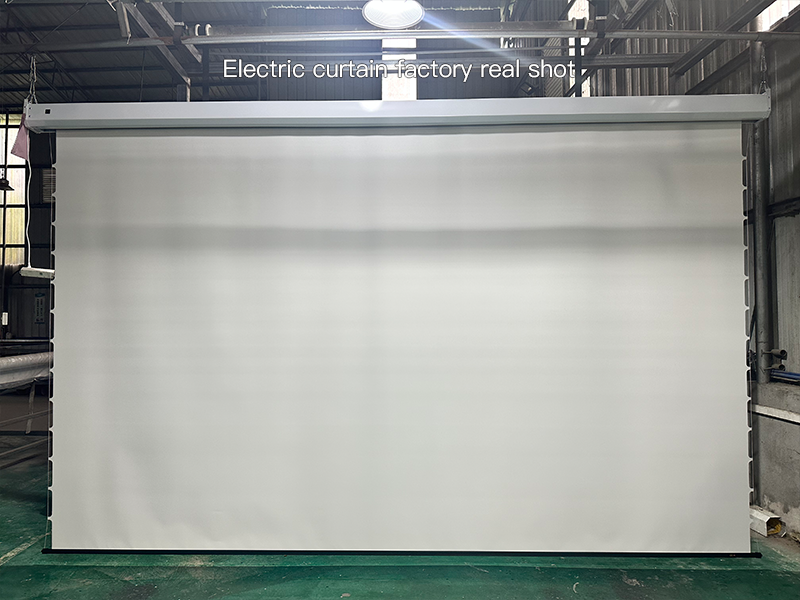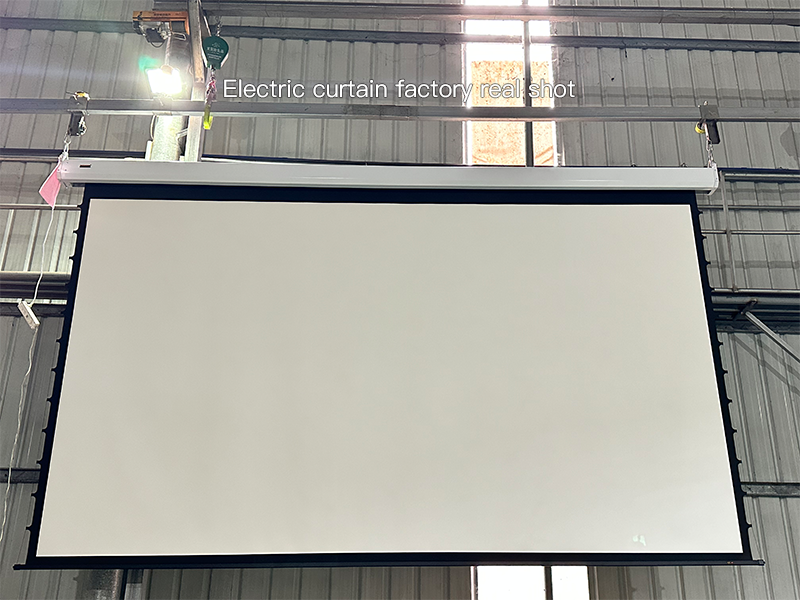

When selecting a projection screen for a home theater, many consumers find themselves asking: should I choose a white screen or a gray screen? For some, the immediate assumption is that a white screen is superior—often believed to deliver brighter, more vivid colors and a clearer image. However, due to limited knowledge about projection screen materials, many users know very little about gray screens and may even hold certain misconceptions about them.
Gray screens are often referred to as “high-contrast screens.” The principle behind them is simple: gray surfaces have the ability to absorb more ambient light compared to white screens. Since white screens do not possess this light-absorbing quality, they are more susceptible to reflections. A gray screen helps maintain deeper black levels by reducing the interference caused by stray light. As a result, whites remain bright, while blacks appear darker due to minimized light pollution. This enhances the overall contrast ratio of the projected image.
A common misunderstanding about gray screens is that they cannot display “true” white. Some users believe that gray screens make whites look dull or tinted. In reality, if white appears inadequate, it is often due to insufficient projector brightness or an incorrectly matched screen size or gain—not necessarily the screen’s color. Whether using a white or gray screen, an improperly configured setup can lead to poor color performance. In fact, a gray screen may even reflect a brighter white than a low-gain white screen under the right conditions. Ultimately, the perceived “whiteness” depends largely on whether the projector provides adequate brightness.

Another frequent concern is that gray screens distort colors or introduce a color cast. It’s important to note that both white and gray screens are manufactured with different color temperatures. For instance, when a standard 6500K light source projects onto a screen, the reflected light might measure at 5500K, 6500K, or even 7300K depending on the screen material. This variation occurs with both white and gray screens. However, by calibrating the projector’s settings, accurate color reproduction—including a correct 6500K white point—can be achieved on either type of screen. Therefore, gray screens are not inherently prone to color shifting.
One of the standout advantages of gray screens is their ability to enhance contrast and reduce the impact of ambient light. This makes them particularly suitable for home theaters or living room setups where controlling light is challenging. In smaller spaces, light reflecting off walls, ceilings, and furniture can significantly impair image quality. Unlike ideal dedicated theater rooms—which often feature dark walls, ceilings, and furnishings—most multi-purpose entertainment spaces have light-colored surfaces that reflect light. Even with all lights turned off, reflected light can cause a “haze” or “wash-out” effect on white screens. Gray screens mitigate this issue by absorbing stray light, resulting in richer blacks, improved contrast, and a clearer image.
That said, gray screens generally have lower gain values compared to white screens, which means they reflect less light. However, this often results in a wider viewing angle, making gray screens an excellent choice for larger seating arrangements. It is also worth noting that while gray screens significantly reduce ambient light interference, they cannot eliminate it entirely. For the best results, some degree of light control—such as blackout curtains or dark wall treatments—is still recommended.
So, which one should you choose for your home theater? The decision should be based on your specific viewing environment rather than general assumptions. If you have a dedicated, light-controlled room with dark surfaces, a white screen will likely deliver outstanding performance. On the other hand, if your projector is set up in a living room or multi-use space with light-colored walls and furnishings, a gray screen will help maintain image integrity despite ambient light challenges.
In summary, both white and gray screens have their own strengths. Making an informed choice requires understanding your room’s lighting conditions and the screen’s characteristics. Avoid following trends blindly, and instead, select the screen that best suits your practical needs for an immersive viewing experience.


